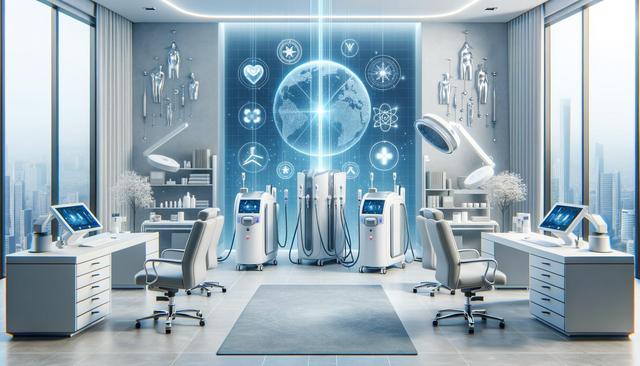What to Expect from Laser Treatment Clinics
Laser treatment clinics have become increasingly popular for addressing a wide range of skin and cosmetic issues. These facilities specialize in using targeted light technology to perform procedures such as hair removal, acne scar reduction, pigmentation correction, and even vascular treatments. The primary advantage of visiting a clinic dedicated to laser treatments is the assurance of advanced equipment handled by trained professionals. Most clinics begin with a consultation to assess skin type, treatment goals, and any underlying conditions that may affect outcomes. These assessments help customize treatment plans tailored to individual needs, ensuring both safety and effectiveness.
Common procedures offered include:
- Laser hair removal for different skin and hair types
- Fractional CO2 laser for deep skin resurfacing
- IPL (Intense Pulsed Light) for skin tone correction
- Q-switched lasers for tattoo removal
- Laser vein treatments for spider veins and vascular lesions
Clinics often recommend multiple sessions for optimal results, depending on the condition being treated. The number of sessions and specific laser type used can impact both the results and the overall cost.
Different Types of Laser Treatments and Their Benefits
Each laser treatment serves a specific purpose, and understanding these options helps clients make informed choices. Hair removal lasers target melanin in hair follicles, gradually reducing hair growth in the treated area. These are especially popular for areas like the underarms, legs, and face. Meanwhile, skin resurfacing lasers, such as fractional CO2 or erbium lasers, are widely used for reducing wrinkles, scars, and uneven skin texture.
Tattoo removal typically involves Q-switched or picosecond lasers. These break down ink particles in the skin, allowing the body to naturally eliminate them over time. For pigmentation issues, including sunspots or melasma, IPL and laser toning treatments are frequently used. These help lighten dark spots without damaging surrounding skin. Vascular lasers are effective for treating broken capillaries and spider veins by targeting blood vessels under the skin.
Benefits of laser treatments include:
- Non-invasive procedures with minimal downtime
- Customizable treatments for different skin types
- Long-term improvement in skin texture and tone
- Gradual and natural-looking results
Choosing the appropriate treatment depends on skin condition, desired results, and individual response to laser energy. A professional consultation is essential to determine the most suitable laser type for each case.
Estimated Price Ranges for Laser Procedures
Laser treatment prices vary widely depending on the type of procedure, the area being treated, and the number of sessions required. In general, laser hair removal tends to be one of the more affordable options, especially for smaller areas such as the upper lip or underarms. Larger areas like legs or back cost more due to increased treatment time and energy use. Skin rejuvenation and resurfacing treatments typically require fewer sessions but may have a higher cost per session due to the intensity of the lasers used.
Here’s a general overview of price ranges:
- Laser hair removal: $100–$500 per session
- Fractional CO2 resurfacing: $600–$1,500 per session
- IPL treatments: $200–$600 per session
- Laser tattoo removal: $150–$400 per session
- Vascular laser treatments: $300–$800 per session
Some clinics offer package deals or membership plans that reduce the per-session cost. Additionally, pricing may vary based on geographic location and the experience of the practitioner. While cost is an important consideration, it should not be the sole factor in selecting a clinic. Safety, hygiene standards, and practitioner expertise are equally important.
Factors to Consider When Choosing a Clinic
When selecting a clinic for laser treatments, several key factors can help ensure a safe and satisfying experience. Start by verifying the credentials of the clinic and its staff. Licensed dermatologists or certified laser technicians should perform the procedures. Clinics should also use FDA-approved lasers and maintain high hygiene and safety standards.
Consider the following when evaluating clinics:
- Availability of consultation and patch testing
- Transparency in pricing and treatment plans
- Aftercare support and follow-up services
- Client reviews and before-and-after galleries
- Specialization in treating diverse skin types
Some clinics also offer combination treatments, integrating laser therapy with other dermatological or cosmetic services such as microneedling, chemical peels, or injectable treatments. This integrated approach may enhance results and provide more comprehensive skin care solutions.
It’s also beneficial to ask about the clinic’s policy on treatment outcomes and what steps are taken if results are not as expected. A reputable clinic will manage client expectations responsibly and offer realistic timelines for visible improvements.
How to Prepare and What to Expect Post-Treatment
Proper preparation before a laser treatment can improve outcomes and reduce the risk of side effects. Most clinics advise avoiding sun exposure, tanning beds, and certain skincare products like retinoids or exfoliants for at least a week before the session. On the day of the treatment, the skin should be clean and free from makeup, lotions, or deodorants, depending on the area being treated.
After the procedure, clients may experience mild redness, swelling, or sensitivity, similar to a sunburn. These side effects usually subside within a few days. Clinics often provide aftercare instructions such as:
- Applying soothing gels or creams
- Avoiding direct sun exposure for a period of time
- Using high-SPF sunscreen daily
- Skipping intense workouts for 24–48 hours
Healing and visible results vary depending on the treatment type. For example, laser hair removal may show reduced hair growth after a few sessions, while tattoo removal or resurfacing may take longer to reveal full results. Follow-up sessions and ongoing skincare routines are crucial for maintaining the benefits of laser treatments.
Communicating openly with your provider and adhering to pre- and post-care guidelines can significantly enhance the overall treatment experience and outcome.
Conclusion: Finding the Right Clinic for Your Laser Needs
Choosing the right clinic for laser treatments involves more than just comparing prices. Factors such as practitioner qualifications, treatment customization, safety protocols, and post-treatment care all contribute to the overall quality of the experience. Whether you’re looking for long-term hair reduction, clearer skin, or tattoo removal, a well-regarded clinic with a strong track record can make a significant difference in results.
Take the time to research, read client testimonials, and schedule consultations to find a clinic that aligns with your needs and expectations. With proper guidance and care, laser treatments can offer effective, lasting improvements for a wide variety of skin concerns.


